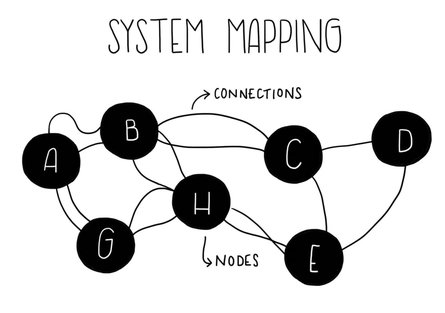
Systems thinking requires a shift in our perception of the world around us. In order to build a new multidimensional thinking framework, we need to discover the dynamics and interconnectedness of the systems at play. This is where systems mapping tools come in — they provide an exploration of the system, communicate understanding, and allow for the identification of knowledge gaps, intervention points, and insights.
As discussed in Chapters 1 and 2 of this series, I have been teaching systems thinking in relation to activated change making for years. While there are some great digital tools out there (like Kumu), every budding and experienced systems thinker will need to employ analog systems mapping tools as well. When I say ‘analog,’ I mean pen-and-paper style — no digital products — so get your writing hands ready.
